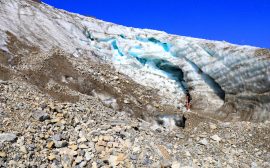Introduction
In today’s digital age, where first impressions are often made online, great property photography plays a pivotal role in attracting potential buyers, tenants, or guests. Exceptional visuals can effectively showcase the unique features, ambiance, and layout of a property, leading to increased interest and faster sales. In this blog, we will explore the art of property photography and discuss essential techniques and tips to capture spaces with style and substance.
1. Understanding the Property
Before embarking on a property photoshoot, it is crucial to fully understand the property you are capturing. Start by reviewing the floor plans, architectural features, and highlights associated with the space. This understanding will help you determine the best angles, lighting, and compositions to showcase the property’s unique selling points effectively.
2. Lighting Matters
Lighting plays a pivotal role in property photography. Natural light is often preferred, as it creates a warm and inviting atmosphere. When shooting interiors, try to shoot during the day when there is ample sunlight streaming through the windows. Utilize reflectors and diffusers to manage the light and avoid harsh shadows. For exterior shots, consider capturing the property during the golden hours (early morning or late afternoon) when the lighting is soft and adds warmth to the images.
3. Composition and Perspective
Creating visually appealing compositions is vital in property photography. Start by decluttering the space and removing any unwanted or distracting elements. Utilize leading lines to guide the viewer’s eye through the frame, emphasizing the flow and layout of the room. Experiment with different perspectives, such as shooting from low angles or capturing interesting architectural details to add depth and interest to your photographs.
4. Showcasing Space and Scale
When photographing larger properties, it is crucial to capture the sense of space and scale accurately. Wide-angle lenses are often used in property photography to showcase both the size of the rooms and the overarching layout. Be careful not to overuse wide-angle lenses, as they can introduce distortion. Aim for a balanced representation that accurately portrays the property while keeping the proportions realistic.
5. Staging for Success
Staging a property is an effective way to create beautiful and inviting spaces for photography. Consider adding tasteful decor, arranging furniture, and ensuring impeccable cleanliness. By creating an appealing ambiance, you can capture the potential and possibilities of the property, evoking emotions in viewers and helping them visualize themselves inhabiting the space.
6. Post-processing and Editing
Once you have captured the images, post-processing and editing can take your property photography to the next level. Edit images to enhance colors, correct lighting, and remove any distractions. Strive for a balance between creating a natural and vibrant representation of the property. Avoid over-editing to maintain realism, especially when it comes to architectural details and colors.
Conclusion
Property photography is a powerful tool for real estate agents, property owners, and vacation rental hosts to entice potential buyers or tenants. By understanding the property, utilizing lighting effectively, creating compelling compositions, showcasing the space accurately, staging appropriately, and applying post-processing techniques, you can create stunning visuals that captivate viewers. So, grab your camera, embrace your creativity, and embark on a fulfilling journey to capture properties with style and substance!



